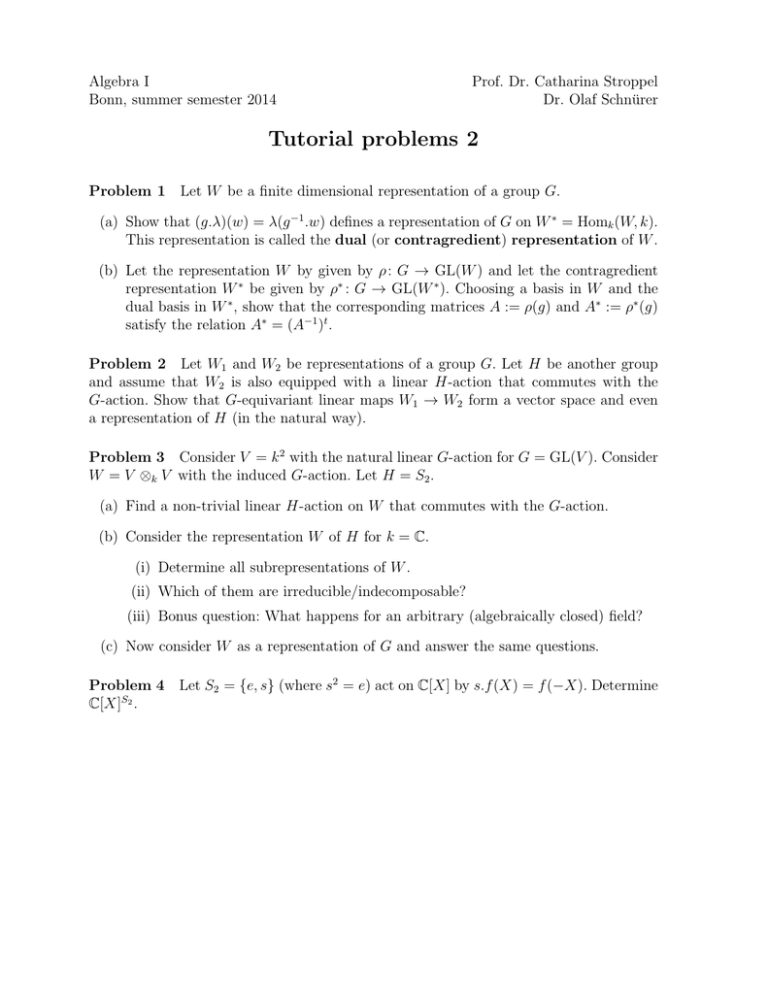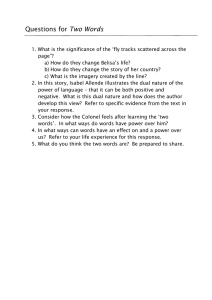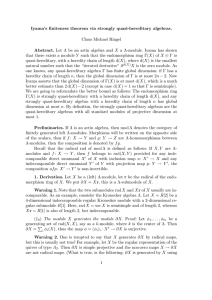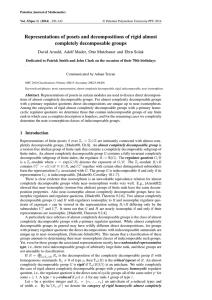Tutorial Problems 2
advertisement

Algebra I
Bonn, summer semester 2014
Prof. Dr. Catharina Stroppel
Dr. Olaf Schnürer
Tutorial problems 2
Problem 1 Let W be a finite dimensional representation of a group G.
(a) Show that (g.λ)(w) = λ(g −1 .w) defines a representation of G on W ∗ = Homk (W, k).
This representation is called the dual (or contragredient) representation of W .
(b) Let the representation W by given by ρ : G → GL(W ) and let the contragredient
representation W ∗ be given by ρ∗ : G → GL(W ∗ ). Choosing a basis in W and the
dual basis in W ∗ , show that the corresponding matrices A := ρ(g) and A∗ := ρ∗ (g)
satisfy the relation A∗ = (A−1 )t .
Problem 2 Let W1 and W2 be representations of a group G. Let H be another group
and assume that W2 is also equipped with a linear H-action that commutes with the
G-action. Show that G-equivariant linear maps W1 → W2 form a vector space and even
a representation of H (in the natural way).
Problem 3 Consider V = k 2 with the natural linear G-action for G = GL(V ). Consider
W = V ⊗k V with the induced G-action. Let H = S2 .
(a) Find a non-trivial linear H-action on W that commutes with the G-action.
(b) Consider the representation W of H for k = C.
(i) Determine all subrepresentations of W .
(ii) Which of them are irreducible/indecomposable?
(iii) Bonus question: What happens for an arbitrary (algebraically closed) field?
(c) Now consider W as a representation of G and answer the same questions.
Problem 4 Let S2 = {e, s} (where s2 = e) act on C[X] by s.f (X) = f (−X). Determine
C[X]S2 .







